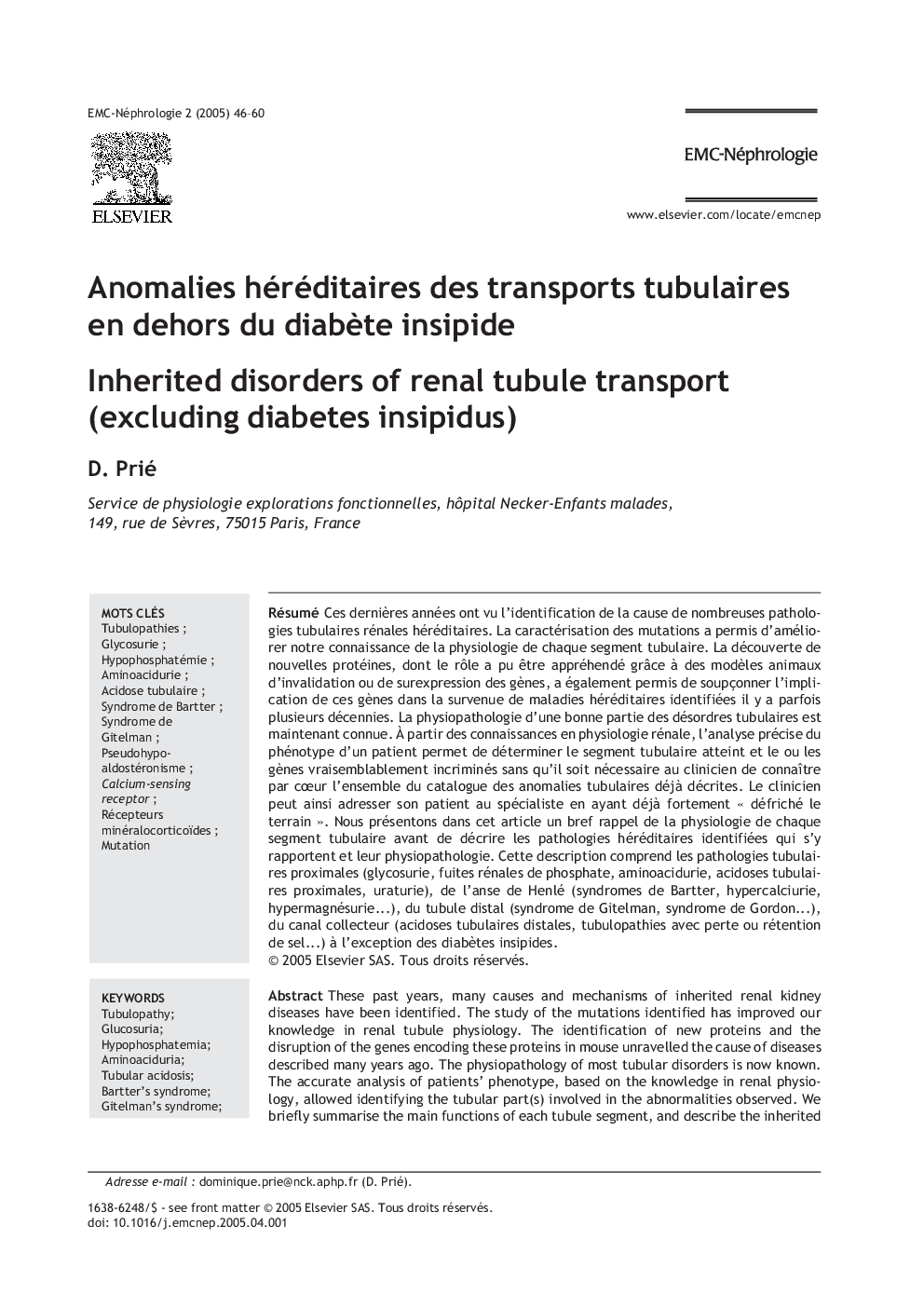| Article ID | Journal | Published Year | Pages | File Type |
|---|---|---|---|---|
| 9307891 | EMC - Néphrologie | 2005 | 15 Pages |
Abstract
These past years, many causes and mechanisms of inherited renal kidney diseases have been identified. The study of the mutations identified has improved our knowledge in renal tubule physiology. The identification of new proteins and the disruption of the genes encoding these proteins in mouse unravelled the cause of diseases described many years ago. The physiopathology of most tubular disorders is now known. The accurate analysis of patients' phenotype, based on the knowledge in renal physiology, allowed identifying the tubular part(s) involved in the abnormalities observed. We briefly summarise the main functions of each tubule segment, and describe the inherited disorders currently identified together with their pathophysiology. We describe the dysfunctions of proximal tubule (glycosuria, renal phosphate leak, aminoaciduria, tubular acidosis, urate excretion), thick ascending limb (Bartter's syndrome, hypercalciuria, hypermagnesuriaâ¦), distal tubule (Gitelman's syndrome, Gordon's syndromeâ¦), collecting duct (distal tubular acidosis, salt wasting or retention syndromeâ¦). Diabetes insipidus is not included.
Keywords
Related Topics
Health Sciences
Medicine and Dentistry
Nephrology
Authors
D. Prié,
